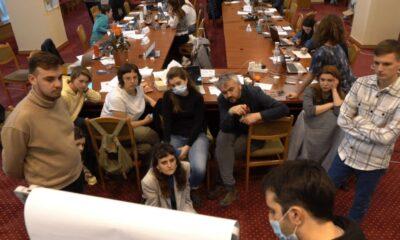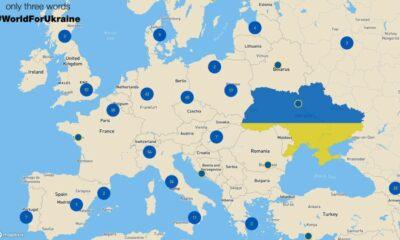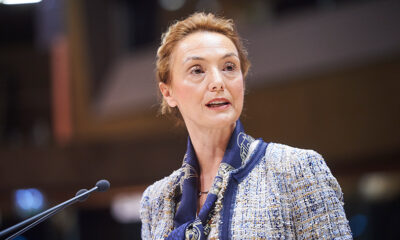Economy
Yanukovych elaborates a new economic reform plan
Reading Time: 3 minutesUkrainian President, Viktor Yanukovych, launched his long-awaited reform program with great fanfare, addressing the nation and parliamentarians from the lavish Soviet-style Ukraina palace in central Kyiv on June 3.
by Pavel Korduban
Ukrainian President, Viktor Yanukovych, launched his long-awaited reform program with great fanfare, addressing the nation and parliamentarians from the lavish Soviet-style Ukraina palace in central Kyiv on June 3. The document, which details reform plans in the economic sector for 2010-2014, prepared with the help of the international consulting company McKinsey, is designed primarily to impress the International Monetary Fund (IMF), which the Yanukovych team asked for multi-billion dollar loans. However, the IMF doubts that it is ambitious enough. Kyiv signaled that if it failed to convince the IMF, it would rely on financial support from Moscow.
The plan provides for lowering the state budget deficit from 5.3 percent in 2010 to 2 percent by 2014, while public debt should be stabilized at 45 percent and inflation is expected to decline from 16 percent in 2009 to 5-6 percent by 2014. In line with IMF requirements, the plan includes increasing the pension age. It is scheduled to start repaying, from August 2010, the multi-billion dollar value-added tax debt to exporters accumulated in 2008-2010, which is one of the main hurdles to foreign investment. A new tax code, to be passed this year, aims to simplify taxation and bring it closer into line with European standards. The share of the public sector in the economy will diminish from 37 percent to 20-25 percent. Talks on a free trade zone with the European Union are scheduled to be completed in 2012 (www.zn.ua/2000/2020/69596). The plan can be summed up in three key words: liberalization, deregulation and Europeanization.
Even Yanukovych’s critics agree that the plan is good, but there are doubts about the seriousness of the government’s intentions. Former Finance Minister, Viktor Pynzenyk, a liberal economist and fierce critic of both Prime Minister, Mykola Azarov’s, cabinet and their predecessors, suggested that the plan was drafted only to coax the IMF into issuing more loans. He pointed to discrepancies between the plan and the state budget for 2010, whose real deficit may amount to as much as 16 percent (UNIAN, June 3). IMF representative in Ukraine, Max Alier, told Yanukovych that the reform plan was not ambitious enough, particularly in regard to the budget deficit and inflation, and that it lacked specific deadlines. Yanukovych promised to coordinate the plan’s implementation with the IMF (www.liga.net, June 2).
Ukraine wants the IMF to issue a new 2.5 year loan, whose size is yet to be determined. It is expected to range from $12 billion to $20 billion, replacing the $16.4-billion stand-by loan from which almost $11 billion was received in 2008-2009. Ukraine would have defaulted without IMF financing during the difficult 2009, when state coffers were almost empty and Russian gas prices grew. IMF money is no less needed because Azarov’s cabinet fell into the same trap as its predecessors: it refused to cut spending in 2010 for fear of losing popularity, while revenues for the budget are still hard to collect in an economy which is only slowly emerging from the financial crisis. The 15 percent decline in GDP in 2009 will not be addressed soon as GDP is expected to grow by no more than 4 percent this year.
Deputy Prime Minister, Serhy Tyhypko, responsible for IMF loans in the Azarov cabinet, admitted in an interview with ICTV on June 7 that Ukraine might fail to qualify for IMF loans. However, he said that “nothing dramatic will happen” in that case, other than the finance ministry issuing more Treasury bills and additional loans would need to be taken from Russia.
Russia has come to the rescue long before the completion of talks with the IMF, whose mission is scheduled to arrive in Kyiv on June 21, consequently a final decision on loans will not be taken earlier than the middle of summer. Ukraine has already received a $2 billion loan from the Russian state-controlled VTB bank. The deal was shrouded in Byzantine secrecy. On June 10, several Russian and Ukrainian media outlets reported, citing anonymous sources, that VTB issued the loan for six months at the under-market rate of 6.7 percent. VTB and the Ukrainian government neither confirmed nor denied the reports. On June 11, Russian Ambassador, Mikhail Zurabov, “conceded” that the loan “may have been issued” by VTB but he refused to provide any details (UNIAN, June 11). The loan is evidently aimed at temporarily filling gaps in the budget in the absence of IMF loans.
The failure to secure IMF financing would be a red flag for Western creditors and investors alike. The niche will be filled by Russia which is not afraid of the difficult economic situation in Ukraine as it is guided by geopolitical and long-term economic considerations, while for Yanukovych, immediate business and electoral considerations dominate. This was demonstrated by the April “fleet-for-gas” deal in which Ukraine received a 30 percent gas price discount in exchange for extending the Black Sea Fleet basing agreement in Sevastopol by 25 years (EDM, April 28). Moscow has already suggested merging several industries in both countries, including nuclear energy, oil and gas, aerospace and ship-building industries. Given the differences in size between the two economies, such mergers would be tantamount to takeovers by Russia.
Economy
Moldova will receive a disbursement of 36 million euros as part of the the Economic Recovery Plan
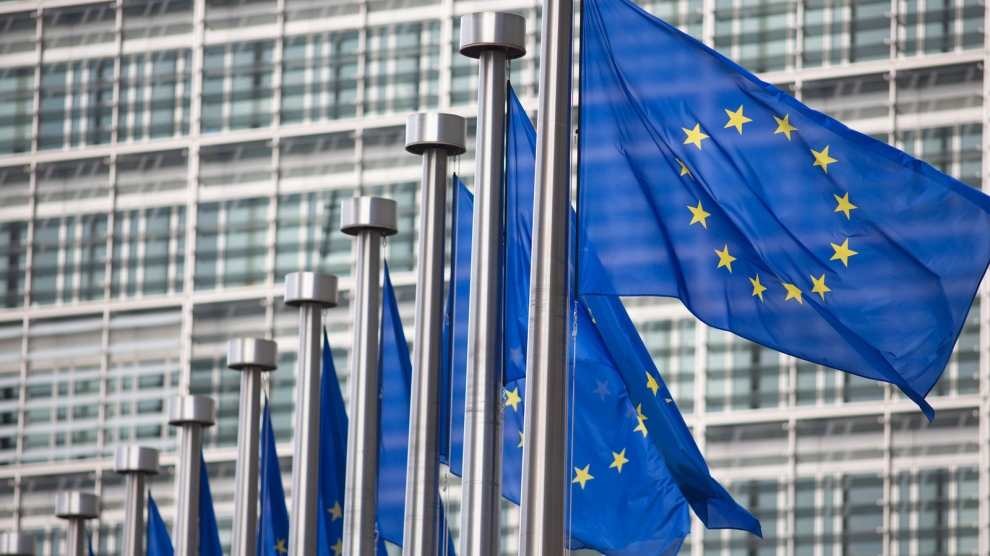
This week, the European Commission approved the disbursement of 36 million euros in grant money for the Republic of Moldova. The announcement was made by Deputy Director-General for Neighbourhood Policy and Enlargement Negotiations at the European Commission, Katarina Mathernova, who paid an official visit to the Republic of Moldova between September 13-15, together with Managing Director for Russia, Eastern Partnership, Central Asia, Regional cooperation and OSCE, at the European External Action Service, Michael Siebert.
The EU officials had meetings with President Maia Sandu, Minister of Foreign Affairs and European Integration, Nicu Popescu, Speaker of Parliament, Igor Grosu, Prime Minister of the country, Natalia Gavrilita, as well as key representatives of Government, international financial institutions and the civil society, according to a press release issued by the Delegation of the European Union to the Republic of Moldova.
Beside such topics as the EU-Moldova relations and prospects, the priorities of the reform agenda of the new Moldovan Government, preparations for the Eastern Partnership Summit at the end of the year and the Transnistrian conflict settlement, the officials also discussed the EU assistance in support of reforms and the Economic Recovery Plan for Moldova, which was announced in June with a total EU support of 600 million euros over the next 3 years.
“The first measures under the Economic Recovery Plan will shortly materialize, with the expected disbursement of 36 million euros in grant money under budget support programmes to support the authorities’ efforts to fight against the consequences of the pandemic. Moldova can count on EU’s assistance on its path to reforms and to recovery, bringing tangible results to citizens,” Katarina Mathernova stated.
The plan is based on assistance provided by the European Union through various bilateral and regional instruments, aiming to mobilize the funds in the form of grants, loans, guarantees and macro-financial assistance.
“The Economic Recovery Plan for the Republic of Moldova involves much more, not just this financial support provided immediately. It must help digital transformation, strengthen infrastructure, energy efficiency, education and support small and medium-sized enterprises,” the EU official also said.
As Prime Minister Natalia Gavrilita informed, “The Economic Recovery Plan and the 5 flagship initiatives for Moldova in the Eastern Partnership will directly contribute to the reform and consolidation of institutions, stimulate long-term socio-economic development, bring direct benefits to citizens, and unleash new economic opportunities through promoting the green agenda and digitization. Small and medium-sized enterprises (SMEs) have been hit hard by the crisis. Promoting and diversifying access to finance and reducing collateral requirements will be essential in supporting economic operators. We are grateful to the EU partners who will launch two programs to support 50 000 independent Moldovan SMEs to adapt to the new conditions.”
President of the Republic of Moldova, Maia Sandu, welcomed the decision of the European Union to disburse about 745 million lei in grant money, as the official page of the President’s Office announced. “EU support comes after a long period of freezing of European assistance, caused by former governments. We managed to relaunch the political dialogue with the European Union and resume financial assistance. The Republic of Moldova is gradually regaining the trust of its strategic partners. This European support is also a signal of encouragement for the new Government team in its commitment to clean up the institutions, fight corruption and launch development programs in the country,” said Maia Sandu.
Photo: unknown
Economy
Romania and Moldova signed a partnership memorandum pledging to cooperate in promoting their wines

The Chamber of Commerce and Industry of Romania (CCIR) and the National Office for Vine and Wine (NOVW) of the Republic of Moldova signed, last week, a memorandum of cooperation on organizing joint promotional activities in the markets of common interest, as the CCIR announced.
China, Japan or the USA are just some of the markets targeted by the Romanian and Moldovan institutions. The memorandum also involves advertising activities for wines from common indigenous varieties, promoting the oeno-tourist region, developing a tourist route in the two states, exchange of experience, study visits, and mutual support in identifying new export opportunities. “We are very confident that this collaboration between our organizations will lead to sustainable economic growth and a higher degree of well-being among Moldovans and Romanians,” claimed Deputy Secretary-General of CCIR, Bogdan Visan.
On the other hand, Director of the NOVW, Cristina Frolov, declared that no open competition with Romania is aimed at the governmental level of the Republic of Moldova. “This request for collaboration is a consequence of the partnership principle. Romania imports 10-12% of the wine it consumes, and we want to take more from this import quota. Every year, the Romanian market grows by approximately 2.8%, as it happened in 2020, and we are interested in taking a maximum share of this percentage of imported wines without entering into direct competition with the Romanian producer,” the Moldovan official said. She also mentioned that Moldova aims at increasing the market share of wine production by at least 50% compared to 2020, and the number of producers present on the Romanian market – by at least 40%.
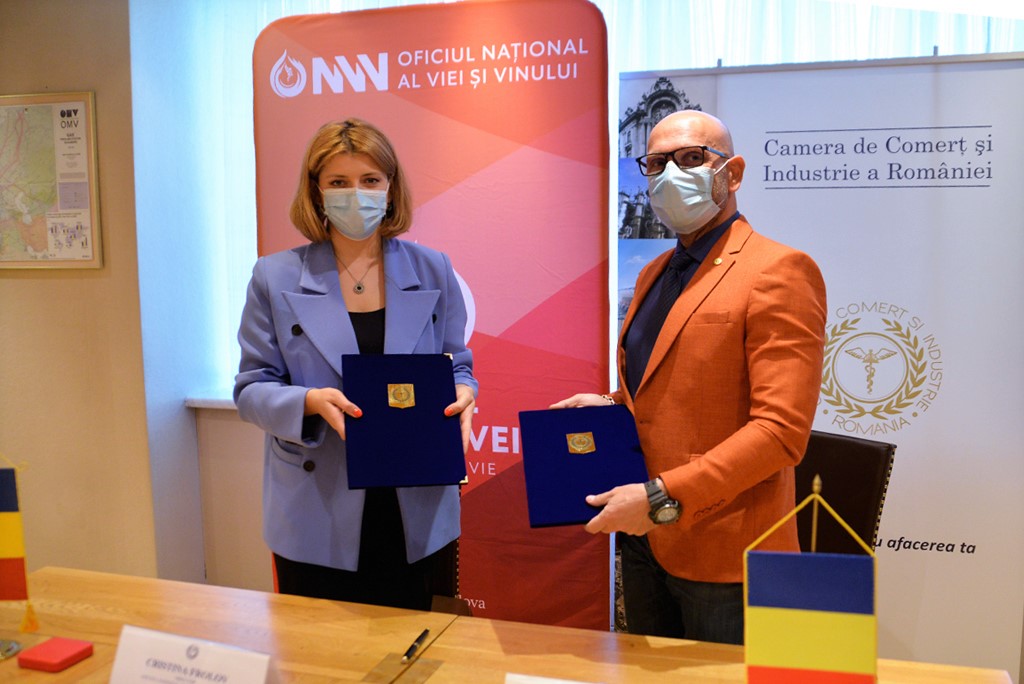
Source: ccir.ro
**
According to the data of the Romanian National Trade Register Office, the total value of Romania-Moldova trade was 1.7 billion euros at the end of last year and over 805 million euros at the end of May 2021. In July 2021, there were 6 522 companies from the Republic of Moldova in Romania, with a total capital value of 45.9 million euros.
The data of Moldova’s National Office of Vine and Wine showed that, in the first 7 months of 2021, the total quantity of bottled wine was about 27 million litres (registering an increase of 10% as compared to the same period last year), with a value of more than one billion lei, which is 32% more than the same period last year. Moldovan wines were awarded 956 medals at 32 international competitions in 2020.
Photo: ccir.ro
Economy
Moldova’s hope to be a top walnut exporter and its main difficulties
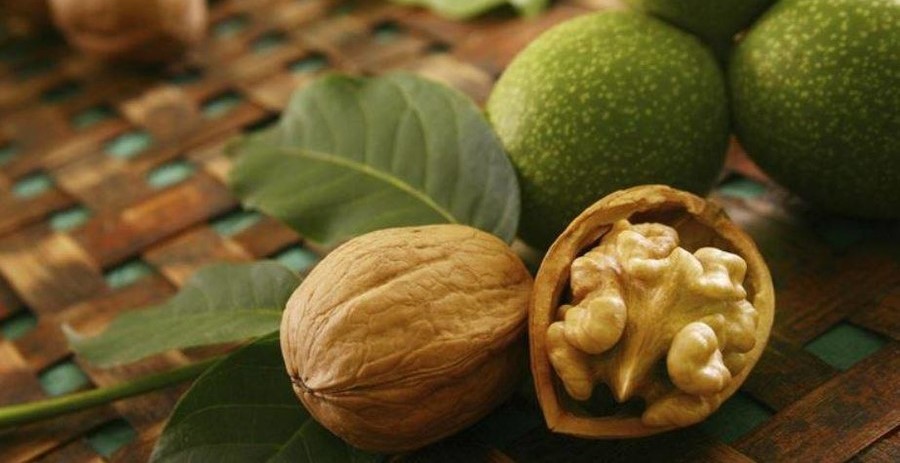
The Republic of Moldova has perfect weather conditions for growing walnut trees, that creating a great potential of walnut production and trade, especially on international markets, where the demand is way higher than the product’s supply. National and international experts believe that the country’s walnut production industry is on the verge of important transformations, which could lead to increased yields, quality and competitiveness worldwide.
According to authorities, Moldova exports 34-35 thousand tons of walnuts in shell, which is about 7% of the total export of fruit and 5% of the total export of horticultural products. The export value is assessed as being $120 million, that being 57-60% of the total fruit export value and about 50% of horticultural export value. Most of walnut crops are exported to the EU countries, such as France, Germany, the Netherlands, Romania and Austria. The country’s exports were among the world’s top 10 when it comes to the highest dollar value of the product during 2020.
Viorel Gherciu, Minister of Agriculture and Food Industry, pointed out that the production in the domestic walnut industry has increased by 55% in the last five years, which ranks Moldova among the main producers in the world.
“The biggest opportunity for this industry is that we are in the geographical proximity of the largest walnut import area in the world, which is the European Union, with almost 40% of total imports in the world. We are on the EU border, with privileged relations, with an Association Agreement. We already enjoy a good relationship in working with European importers, they trust our processors. A very close collaboration has been created and this is, in fact, the guarantee for those who invest in the area,” claimed the president of the Walnut Producers Association, Oleg Tirsina.
The data provided by the National Bureau of Statistics show that there are 34.7 thousand hectares of walnut plantations in the country. 20.90 hectares are represented by orchards. 75% of planted orchards are formed of old varieties trees. 30-35% of the exported production comes from orchards, the rest comes from individual farmers and plantations along the roads. This means that the quality of walnut production is not at its maximum potential. Developing commercial plantations through orchards modernization and extension of walnut varieties would provide double yield and better quality, experts say.
Governmental support in the form of subsidizing solutions, foreign investments and credit options are indispensable for the industry development. One of the financing options is the credit line of the European Investment Bank Project. Since 2016, 15 producers and processors of nuts, almonds and hazelnuts have benefited from these loans with the total amount of investments worth 8.7 million euros. A further extension of the project would provide another 60 million euros for the modernization of the horticultural sector in general and for harvesting organic walnuts in particular.
Photo: heymoldova.com


